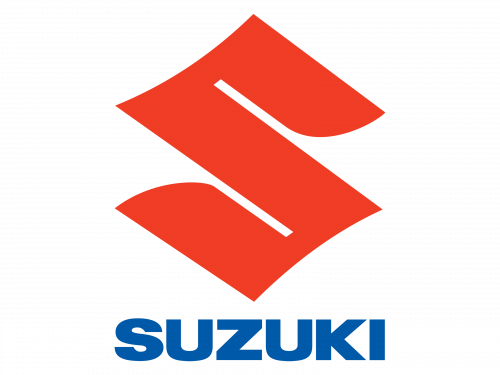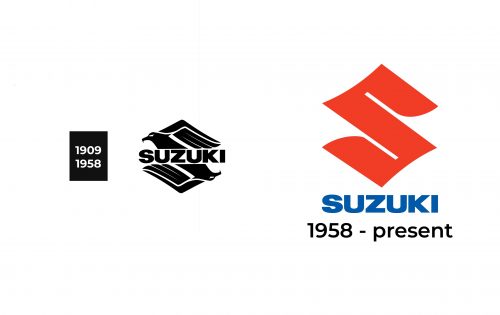Founded: 1909
Founder: Michio Suzuki
Headquarters: Hamamatsu, Japan
Official website: www.globalsuzuki.com
Suzuki is the name of a famous Japanese corporation, specialized in the production of various vehicles, including motorcycles and cars, and headquartered in Hamamatsu. The brand produces motorcycles of all classes, from supersport and enduro, and has its star in every category.
Motorcycle History
Suzuki, like many other brands manufacturing vehicles today, was not always an automobile manufacturer. The Japanese brand started from the Suzuki Lion Company textile industry in 1909. In 1920, Suzuki Loom Company was reorganized and named Suzuki Loom Manufacturing Co., and Michio Suzuki, the founder, became its president.
In 1937 Suzuki decided that his company should develop in other directions. In particular, it was decided to create a small car. In 1937, work in this area began, and in 1939 several prototypes of compact cars were created; they were equipped with the innovative at the time four-cylinder, four-stroke water-cooled engines with an output of 13 hp and a volume of fewer than 800 CC. But these prototypes were not destined to go into mass production – World War II was coming, and the government declared civilian cars a subject of not the first necessity at the moment.
Who owns Suzuki?
Suzuki Motor Corporation is a public company, which means it is owned by several stockholders. As for the management, the chairman of the company is Osamu Suzuki, the husband of Michio Suzuki’s granddaughter.
After the war, Suzuki returned to the production of looms. And only in the beginning of the 1950s, the brand came back to the vehicle manufacturing idea, after the things with sewing machines started found bad. In 1952, the development of Suzuki came out – his first motorcycle Power Free with a very original design: in addition to a two-stroke engine of 36 CC, it was also equipped with pedals, which were used to help the engine. The system was so successful that the government gave Suzuki a financial subsidy to continue development.
In 1953, the Diamond Free, a motorcycle with a two-stroke 60 CC engine, won the Mount Fuji Hill Climb race. Thus began the history of Suzuki’s countless wins in motorcycling. As early as 1954, the company was producing 6 thousand motorcycles a month and changed its name to Suzuki Motor Co., Ltd. A year later, the company started to produce automobiles,
In 1967, Suzuki opens the first motorcycle factory outside of Japan in Thailand.
In 1968, the T500 was born, which was equipped with a 500 CC, air-cooled, twin-cylinder, in-line engine. Its power was 47 hp at 6500 rpm. The motorcycle could reach 180 km/h.
In 1972, a civilian version of the TM400 motorcycle was introduced, called the Hustler 400. It was equipped with a duplex frame and the same racing motor as the sportbike. And 1974 was the year of the unique Suzuki RE5, which was the first Japanese motorcycle to be equipped with a rotary engine.
The 1970s were very productive for the brand, and many great models saw the lights during that decade. In 1975, the RM125 mass-produced cross-country motorcycle debuted, powered by a 123 CC, air-cooled, single-cylinder two-stroke engine. The power unit produced 23 hp at 10,500 pm. The brand’s first road bike with a full-fledged GS750 four-stroke engine came out in 1976. The DOHC four-cylinder engine with two camshafts and air cooling produced 68 hp at 8,500 rpm. The GS series was almost immediately expanded with the GS400 model.
In 1978, the range was expanded with the first Suzuki motorcycle with a 1-liter engine, the GS1000. Its engine developed 87 hp and helped the bike to reach 217 km/h. Perfect handling was ensured by the adjustable suspension. It was an extremely stylish and reliable motorcycle.
In 1981, the most powerful motorcycle of that time was presented – Suzuki GSX 1100S Katana. The engine of this bike generated 111 hp at 8500 rpm.
In 1985, the GSXR750 was presented, which was a revolutionary breakthrough in motorcycle racing. Its motor produced 130 hp, weighed 179 kg, and its shortened wheelbase provided smooth handling. This motorcycle became a determinant for the further development of sportbikes. The next year it was upgraded to a GSXR1100 version.
Where is Suzuki made?
Most of all Suzuki vehicles are produced in Japan, though the company also has its manufacturing facilities in India, producing thousands of cars and motorcycles for the Asian market.
In 1990, the DR-BIG model was presented, which was equipped with the biggest single-cylinder motorcycle engine in history — 779 CC. 1995 saw the introduction of the popular Bandit 1200 with a 16-valve, 1156 CC, air-oil-cooled motorcycle. It became the benchmark in its class.
Released in 1997, the TL1000S was the company’s first sportbike with a 125 hp twin-cylinder V-motor, which outperformed its main competitors, Honda and Ducati.
The Suzuki Hayabusa, launched in 1999, was the fastest sport-touring bike. It was powered by a 1,298 CC inline four-cylinder engine with overhead camshafts. In just 2.75 seconds, the model accelerated to 97 km/h, and in 10 seconds – to 225 km/h.
Since 2006, the flagship model in the line of cruisers is produced – M109R, which is equipped with a two-cylinder V-engine with a volume of 1,783 cc. It boasts the largest combustion chamber, with a cylinder diameter of 112 mm and a piston stroke of 90.5 mm.
Brand Logo
1909 – 1958
Although the brand was originally a textile company, its logo was designed to represent the renowned and legendary it became years later. It featured the brand name printed using a sans-serif font with smooth, bold strokes. This inscription has not changed ever since and was used in the updated logo as well. The most interesting element, though, was the drawing of an eagle that was diagonally mirrored across the name, creating a stylized letter “S”. The wing shape gave the initial an Asian feel, hinting at the origins of the brand. The logo is done in a classic and timeless black-and-white color palette.
1958 – now
All of the Suzuki motorcycles, except for the iconic Hayabusa, use the same logo, that can be seen on the bonnets of Suzuki cars. Its iconic stylized “S” with a logotype, placed under the emblem, is one of the most recognizable auto and moto badges across the globe.
Emblem and Symbol
The Suzuki “S” executed no bright red color looks modern and sleek, even though it first appeared several decades ago. By today the bold and sharp letter with an obvious Asian influence has gotten its contours cleaned and strengthened, becoming a brilliant reflection of the company’s growth and progress.
Font and Color
The simple yet solid and bold Suzuki logotype, which is written in the uppercase letters, is executed in a traditional sans-serif typeface with bold straight lines and edges. The font of the inscription is very close to such iconic types as Neue Helvetica and Sequel 100 Wide 85.
Where is Suzuki from?
Suzuki is a Japanese company, which was established in Hamamatsu, Shizuoka, and is still headquartered there.
The combination of bright red and medium/blue on the Suzuki logo represents the company as the passionate and powerful one, evoking at the same time a strong sense of reliability and protection.
The Legends
In 1970, Joel Robert, competing for Team Suzuki in the World Motocross Championship, brought the team its first victory in the 250 CC class. He confirmed his championship title two years in a row.
In 1971, the GT750 with a revolutionary for those times three-cylinder two-stroke liquid-cooled motor was put into production. It had an output of 67 hp at 6500 rpm and four mufflers. The Suzuki GT750 was the ancestor of a whole family of motorcycles with three-cylinder engines, which included such models as the GT380 and GT550. Also during this period, road and off-road motorcycles were produced: TS50, TS100, TS125, TS185, TS400, T550.
In the 1970s, engineers of the company realized that in the future the motor world can expect tougher environmental standards, so they began working on a brand new power unit. The Suzuki TM400A cross bike with a 396 CC motor appears. This model, driven by racer Roger DeCoster, wins the title in the 500 CC class in the world championship and holds the victory for five years.






